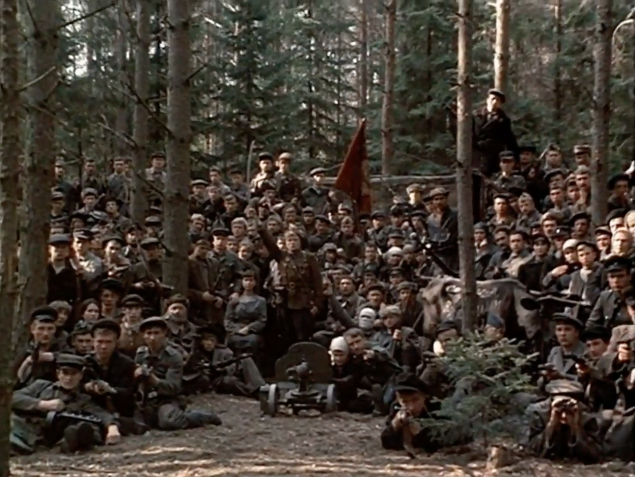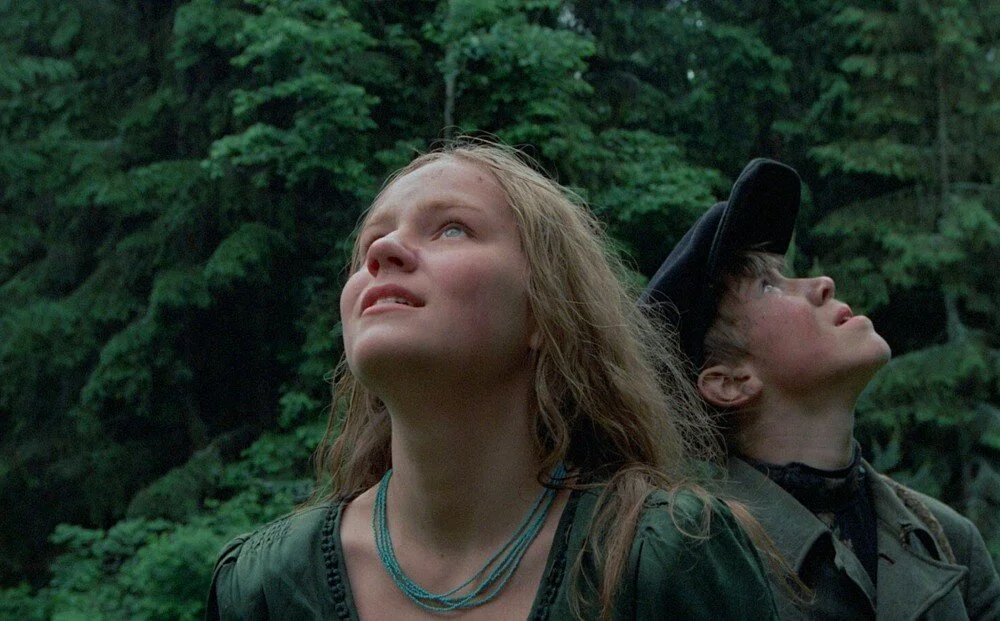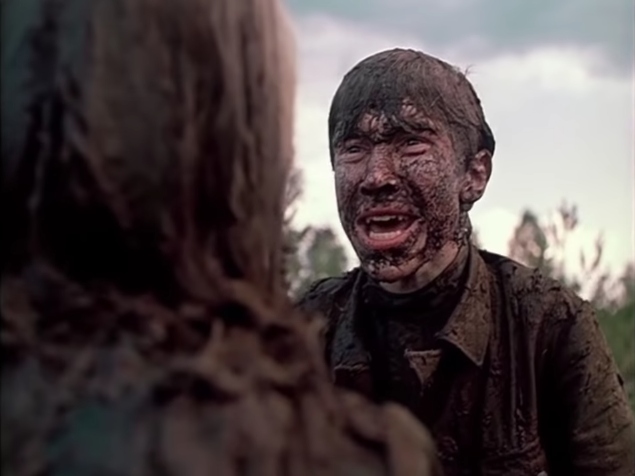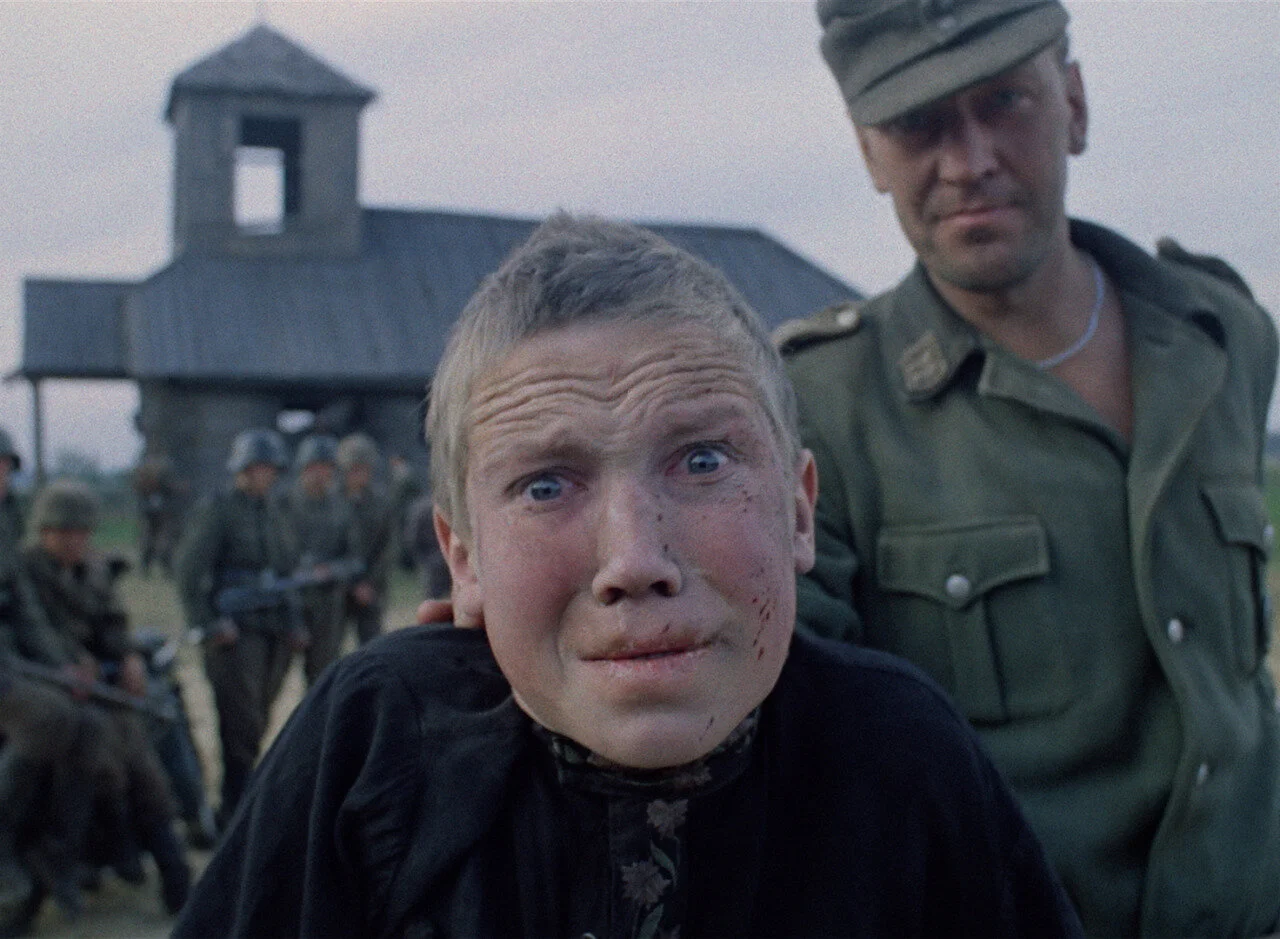COME & SEE: I Came, I Saw, I Barely Conquered
This review made possible by our amazing friends at AFS! Until we can all come together to watch movies as an IRL group again, check out all their VIRTUAL SCREENINGS on their homepage here!
This review contains spoilers.
“Are you crazy?”
“What do you think you’re doing?”
These are the first lines of dialogue spoken in Elem Klimov’s 1985 Soviet anti-war film Come & See. They’re spoken by a village elder as he witnesses two young boys digging in an open field, looking to find a rifle. These words could also sum up what was going through my head when going into this film. I knew it would be a test of my endurance, and people report not being able to watch it a second time. But when I found out that AFS Cinema was screening the new restoration, I decided it was time. Come & See is notoriously hard to watch, and I underestimated how uneasy I felt about watching it until I was already sitting in the theater, waiting for the lights to dim. It was going to be extremely difficult, but ultimately worthwhile.
Come & See takes place in 1943 and follows young Florya, a 15-year-old boy from rural Belorussia. He’s eager to join the Soviet Partisans, a group of everyday villagers defending the country after its invasion by Nazi Germany during WWII. Florya is in the prime of his adolescence at the film’s start, but the events that transpire throughout its runtime seem to age him about 50 years by its end. As the film progresses, total war breaks out, and the viewer is forced to bear witness to the deterioration of not only Florya’s changing environment, but to his spiraling mental state. Traumatic and harrowing are understatements when describing both the events that play out on-screen and in my viewing experience.
Along his nightmarish journey, Florya encounters several fellow civilians, such as the entrancing yet unhinged Glasha, a beautiful nurse not much older than he. They become friendly and spend some time together, but ultimately end up going through Hell and back due to the chaos that ensues around them. There is a scene of them in the forest that serves as the only glimpse of light throughout the darkness that is watching this film. It rains, cleansing them of the dirt caked onto their bodies, offering a temporary solace from their destructive surroundings. Glasha dances, seeming to almost hypnotize Florya. It’s an amusing, captivating scene, but it was impossible to ignore its sinister undertones. Were they simply sharing a moment of dreamlike purity and childlike innocence in the woods, or was this foreshadowing the mental decay that would soon follow? The lines between reality and illusion were blurred, but all fantastical elements would soon be substituted with stark, unrelenting realism.
After the forest scene, Florya returns to his home with Glasha only to find it empty. There are doll-like figurines on the floor of the bedroom, surrounded by flies. He stares down at the dolls as the flies buzz around them, the sound becoming almost deafening. The camera lingers for a while, evoking an unmistakable sense of discomfort in the viewer. You pick up on what is being implied — that his whole family has most likely been killed. The sound of flies fluttering their wings is prevalent throughout the entire film, and I found it to be one of its most disturbing elements. It creates a piercing sense of dread whenever you hear it. The viewer becomes accustomed to associate it with a feeling that death is near and omnipresent, never too far away. When you hear the flies buzzing, you can almost smell the scent of death permeating throughout the scene. The viewers’ suspicions are confirmed during a bloodcurdling scene of Florya and Glasha wading through a gelatinous, muddy bog, as Florya tries to get to an island where he thinks his family is. Once there, chaos breaks out, and Glasha screams that they’re all dead. If waiting for a telltale sign of Florya’s descent into madness, this was it. Shellshocked and partially deafened, he visibly breaks right in front of your very eyes. It’s brutal and borderline torturous to sit through.
You witness this peak moment of Florya’s mental collapse in the form of a head-on close-up, which is common throughout the film. The characters break the fourth wall by looking directly into the camera, and these shots are some of the most emotionally shattering. Through these close-ups, you’re forced to experience the mental state of the characters, often seen at a breaking point. When the characters look directly at you, all boundaries between the viewer and what is happening on-screen disappear. I had no choice but to feel as if I was experiencing everything right there alongside Florya, and it’s the last place I would have wanted to be.
It goes without saying that Come & See is not at all glamorous. It does not depict any type of glorious victory by anyone over anyone else. It brings to light how everyone involved were victims at some point or another during the war, damaged and irreversibly scarred in one way or another. Women, children, the elderly, those fighting on both sides. But do NOT get me wrong: this film does not shed any kind of sympathetic light on the Nazis. If anything, it does the exact opposite. Originally titled “Kill Hitler”, this is an overtly angry film. Klimov was determined to accurately depict the forgotten atrocities committed by Einsatzgruppen on Eastern European villages. These German death squad members appear to be happy go-lucky when carrying out these ferocious mass murders in the movie, passing around an abundance of booze and posing for triumphant photos resembling Renaissance paintings. The overall tone is reminiscent of a Tarkovsky film and the disturbing imagery is impossible to look away from. Klimov himself was born in Stalingrad but evacuated as it was the location of the War’s most brutal battle. He also co-wrote the screenplay with Ales Adamovich, who fought as a part of the Belorussian Partisans as a teenager. They both drew on their experiences when creating Come & See, and those that also experienced these happenings often confirm that they’re 100% accurate.
The last leg of the film is equivalent to what I imagine Hell on Earth to look like. Everything’s on fire, everyone’s covered in dirt, crust and soot, all inhibitions and any grasp on morality have been abandoned. The Earth is soggy and charred, all hope is lost, and all the hairs on your body are sticking up at this point. I won’t give it away, but the sequence that unfolds towards the end is one that ruthlessly shows the potential human beings have for evil. Following that, there is a montage in which history pretends to roll back, going to the very beginning of Hitler’s life. Florya hesitates in making a powerful decision, but ultimately, history cannot undo itself.
Although I barely made it through Come & See, I can wholeheartedly say that it’s probably one of the best movies I’ve ever seen. Definitely the best war film I’ve ever seen. Definitely one of the best child actor performances I have ever seen. It’s a masterpiece in every aspect. The sound, the framing, the effective aesthetic choices and camera angles, the acting, the pacing and timing. It gets to be too much at several points within the film, but seems almost necessary when depicting what really happened to these people. It leaves you utterly speechless and scarred in a very raw, very real way.
Klimov never made another film after Come & See. I can imagine that it sucked the life out of him, like it did for me and many others that have seen it. Yes, this film was extremely hard to sit through, but if one wishes to fully understand the incomprehensible atrocities committed during WWII, then this is a must-watch.







Margeaux is a music and film lover living in Austin, TX. She loves (Sandy) Alex G, sleeping, and crying over Björk.